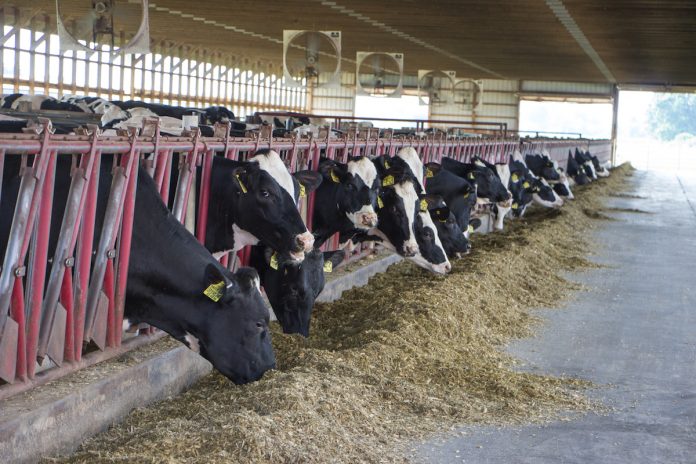Beef producers have readjusted to multiple changes and mandates in the way the beef industry has run in the past three years alone; these changes do not even include the fluctuating prices from 2014.
Farmers and ranchers have had to stay dynamic and resilient to stay current and at times legal in their profession.
One major change in the industry came in 2017 with the veterinary feed directive.
A VFD works like a prescription from a veterinarian, allowing the producer to feed “medically important antibiotic” for an established amount of time.
The medicated/VFD feed will only be obtained with that order from the veterinarian. An antibiotic is considered “medically important” if it is still commonly used for human care.
Examples include tetracycline, penicillin, neomycin and tylosin. Obtaining these antibiotics and using them according to the label, as an injectable, has not changed.
Medicated/VFD feed can only be used to treat or prevent diseases that have been identified by a veterinarian.
This direct intervention by a veterinarian has made the veterinary-client-patient relationship a new reality for many producers, especially the small producer.
One other major change with the VFD is that medicated feed can no longer be used for increasing the rate of gain in livestock by utilizing medicated feed for increased efficiency.
Ionophore feeds
A confusing point in all this is that we can still see “medicated feed” in mills that can be purchased without a VFD.
These feeds, however, are mixed with antibiotics in a specific class, ionophores. The key in understanding the reason why ionophores are not in the VFD has to do with the statement, “medically important.”
Ionophores will target specific ruminant bacteria and inhibit their ability to reproduce without affecting general bacteria the way most antibiotics would.
Therefore, ionophores do not contribute to the cultural overuse of antibiotics, which has created antibiotic-resistant bacteria that have made so many people sick, especially in hospital settings.
Energy efficiency
The way cattle obtains energy from food goes something like this: the cattle feeds the ruminant microbes, and the ruminants feed the cattle.
Just to make it more complicated, different ruminant microbes break down different feeds and some are more efficient than others are in obtaining energy from feedstuffs.
Ionophores will shift the ruminant microbes to the more efficient type, and the cattle will in turn be more efficient with feed.
Ionophores are used by most feedlots in the country and have been shown to have a positive return for the majority of operations.
Rumensin is a type of ionophore used to manage bloat. Bloat is caused when the rumen microbes create too much methane.
A by-product of feed being broken down into acetate primarily causes this methane production.
Ionophores will target this microbe so that its numbers will not outcompete the other microbes that create energy from more efficient products and do not produce as much methane gas.
Thus, ionophores will reduce the bloat potential by creating more efficient products from ruminants so that methane production is reduced and make the animal more efficient in feed utilization.
Ionophore usage
Ionophores are still medicated feed and dosages are very important when using such products.
It’s important to watch out for loss of appetite, slow-moving cattle, stumbling and labored breathing.
Following the label is crucial to prevent these symptoms from happening due to overconsumption.
Another important point to prevent many dietary disorders is to implement gradual change to an animal’s diet. Abrupt alterations in feed can cause major imbalances in the animal, and sometimes death.
The cattle industry has had many changes to its management due to biosecurity, consumer preference and environmental laws. It can be difficult to understand or know what choices are available.
Having a good relationship with your veterinarian is essential to staying current and possibly even legal in today’s market.
Upcoming events
The Farm Science Review is Sept. 17-19.
Even closer is the Ohio State University Extension Manure Science Review Aug. 7 in Tuscarawas County.
The Manure Science Review will include morning presentations, afternoon demonstrations and an optional tour of Bull Country Compost.
Registrations are due Aug. 1.
Both are wonderful opportunities to learn from the Ohio State experts.













